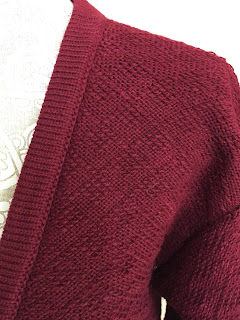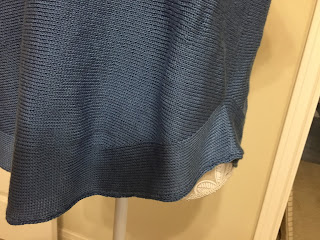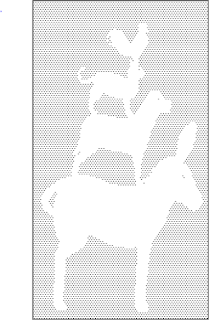MC and L button pushed in on Brother machine
There is yarn in feeder A and a thin yarn or thread in feeder B. Selected needles knit only with the yarn in feeder B, the thread, and non selected needles are knitted with both, yarn and thread. As the thread is so thin the knitting looks like lace.
The yarn in feeder B was 2 strands of serger thread, yarn in feeder A Tamm Estilo. The top as an appearance of a lace top.
But there is more to threadlace.
The next example is a cardigan where thread and yarn are identical. The purl side is used as front side.
The next is only a small sample. Thread in feeder A and yarn in feeder B, again purl side as front. Every few rows the thread is picked up and rehung.

































